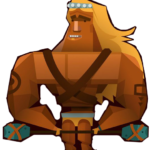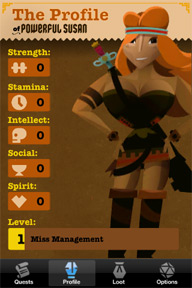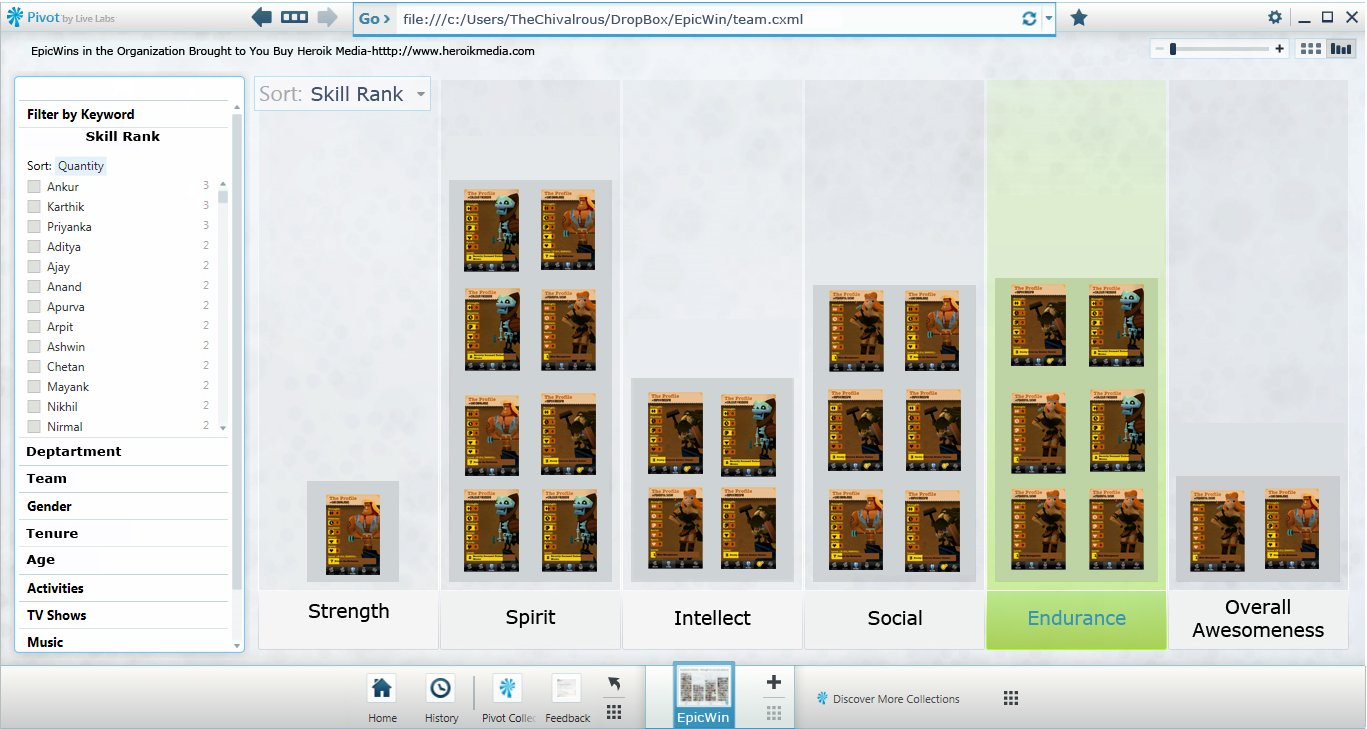Bringing gaming paradigms to the workplace is a growing market, especially in the digital space. The advantage to an individual is to rally excitement and add entertainment value around getting things done. Bombarding the brain with electronic visual stimuli is the latest form of positive reinforcement for mopping the floors, sending emails, paying the bills, dropping off the dry-cleaning and drinking more water or what have you.
Big Biz Wellness & Productivity – For businesses with an eye for saving money and fattening the bottom line, increasing buy-in & participation in wellness programs can significantly lower healthcare costs, boost productivity, and increase employee retention.
Big Biz Buy-In & Lower Labor Costs – Creating environments and experiences with built in game paradigms can be a real money maker and money saver. Essentially, with the right ingredients, a business can increase employee buy in, retention, and productivity while lowering labor costs simply by bringing in more of the elements you’d find in the floor of a casino, only tied to work tasks . What if your job were performance based and performance was measured at every step and task with a point value?
For many professional reasons and personal curiosity, we wanted to investigate how we could bring more of ‘The Game’ to life at home and at the workplace. Enter EpicWin- which is but one of many Heroik case-studies and adventures in gamification.
Our Grand Experiment: Using EpicWin to Promote Change
As an experiment in gamification, over the course of a year, The Heroik Team explored some practical applications of EpicWin by testing it in 5 key areas:
- Personal/Professional productivity at the individual level
- Wellness Tool at the individual level (lose weight, eat better foods, drink more water, hit the gym, etc.)
- Productivity/Wellness for teams, and medium to large businesses.
- Incorporating a Management Approach- New Metrics, KPI’s (that’s biz speak for Key Performance Indicator) and Data Visualization
- Long Term Effectiveness (Does it have staying power?)
Why choose EpicWin?
- It’s available now and dirt cheap. Scalable- Good for the goose and good for the gander, good for individuals, teams and the enterprise.
- It’s Social. Annoy friends and family by tweeting your epic conquests!
- This makes it a simple purchase that’s easy to implement. We like what’s using what’s handy and affordable. In a digital world, what would MacGyver do? Whip out the duct tape.
- You can do more than you think with the app. Apps that integrate with the social and work tools you use each day, on devices you take with you everywhere, present new opportunities. The challenge comes down to execution. It’s all how you use it.

Part 1-Personal Productivity and Health
At first, I used EpicWin to invite more fun into my day to day and maybe get a little bit more work done. My expectations were low. Buying new tools in hopes of saving ourselves from actual work seems like the American way. Let’s be honest, this was an impulse buy and latest attempt to live in denial of my workload/ and distract myself with a new, distracting lens to distort reality. Yet I found I enjoyed the witty character titles that came with each level up. I also noticed I was getting more done at home and work, hitting the gym more often, and drinking more water. These were but a few of the tasks 2 Months of significant productivity gains were proof enough to bring it to the next level and invite the team to join in on the fun.
Part 2-Team Play & Getting Social
I invited some friends to join in on the fun and once they got involved, we all had an excuse to socially brag about our feats and accomplishments across the social-sphere of Facebook and Twitter. This got slightly annoying as we at first over-posted every piece of swag and loot we’d encounter on the game. Yet, seeing your friends and teams get it done and brag about their victories inspires you and everyone else to get their stuff done and stay on task.
 Part 3-Corporate Wellness Programs
Part 3-Corporate Wellness Programs
During a consultation with a company that provides and implements wellness programs, an opportunity to introduce EpicWin into the Enterprise presented itself. We began to discuss implementation and execution of using the app in an organization to promote wellness and productivity through social gaming. We used EpicWin as our proof of concept. Initially we wanted to round up the best wisdom in health and productivity to gather the power of 100 TOE’s (Tasks of Epicness). We could then schedule daily,weekly, and monthly regiments of tasks to steadily increase wellness and productivity. Check out the slideshow below to see our ideas in greater detail.
The game has its constraints.
We had limited access to the user data but this actually lead to important insights about how we think of managing wellness programs and how we measure their effectiveness. We could track character progress in the various attribute categories that the game provides: strength, spirit, social, intelligence, and endurance. The trick was developing a reliable formula for each category that would be an excellent indicator for real progress and improvements in health, wellness, and work performance.
Wellness programs have their constraints.
There were legal concerns too. During our initial discussions about the 100 ToE’s, (Tasks of Epicness), we had to scrap any task that was required entering biometric user data into any organizational database, as it could expose the company to litigation of all sorts. For example, we could not assign a task telling users to enter their weight into some other database, but we could ask them to journal, review, reflect and map their own progress. Ultimately its the healthy and productive habits and best practices we want to build and improve. These produce the results that shave dollars in healthcare costs and boost bottom lines with productivity.
Addressing Cheaters -Haters Wanna Hate.
Critics might be quick to point out the that a system like this might be easy to cheat. We addressed this in a few ways:
- We’re focused on micro-habits and shifting behaviors. Small activities that increase, energy, excitement and ultimately participation. The work sneaks up on you this way.
- Designing for the small percentage of non-participants/cheaters would amount to creating an authoritative environment that’s not enjoyable for anyone.
- The workplace is social. The social pressure to legitimately ‘play the game’ is all that is needed.
Organizations have their limitations…and expectations.
Organizations love data. Wait. Let me restate that. They may get an initial high off of any bags data they can bury their noses in but what great organizations really love is data that they can understand quickly enough to affect and act upon. In many of the wellness tools cater to organizational data addiction by creating shitty user experiences that require users to enter every fart and snickers bar. Ultimately, this leads to burn out, resentment, BS’ing, and total program failure.
Part 4-Data Visualization & Management
Challenge 1- It’s a matter of metrics. Companies don’t need to know employee calorie consumption, or how many steps were taken each day. It’s important to turn away from things that are easy to measure in order to determine how to measure things that are important. The former is an age-old bad habit for managers and personnel addicted to validation vs. true effectiveness. Ultimately, a successful program is one that gives measurable returns.
In order to do that we have to shift the business objectives and expectations to align with reality by defining the metrics that matter. It was fairly easy for us at Heroik to map these metrics and activities to business objectives that make sense for organizations. Such is the nature of our alchemy and it helps that we are an uber-active, bunch of team-building tough mudders. I’ll spare the details, family recipes and perhaps save them for another post.
Creating an Epic Formula and Delivery Vehicle for the Wellness program wasn’t good enough for us. We knew that ultimately, on the other end of this equation, there were managers and stake holders who needed to be able to assess and measure progress and validation. However, looking at data tables, reports and spreadsheets can be equally boring. So the challenge, we explored how we could make managing teams and reviewing the data more fun as well. In essence, we wanted to make some sexy data visualization mechanism.
According to Harvard Business Review, there is and will continue to be some big bucks in data visualization. One product in particular, Microsoft’s Pivot had captured my imagination throughout its development and various iterations. So we gave it a whirl and opened it up and let the horses run so to speak.
The challenging part was polling the application for the various character level data. The experience points, levels in the various categories had to be stored as meta-data or update in real time so that data in Pivot, could be updated in real-time. In English, we wanted managers and stakeholders to see how the organization is doing, in an interactive environment where they could sort and view the data from different angles such as team, department , and various attributes built into the game.
Managers Get in on the Game/ In the Back End
For some unknown reason there is this either/or complex in project development. Apps are often either user-centric and provide a minimalist and crappy back-end reporting mechanism, or they provide a user experience akin to being herded by cattle and focusing on the management aspect. I believe they’re both important. Managers and stake holders need to have as much buy-in and excitement for the program throughout the experience just as the players do.
So what could a manager do with all these gamers and all this data?
Interacting with the data in a simple visual way, allows managers to make connections and correlations that can’t be easily found in a spreadsheet or bar graph. In real time, you can see which teams or individuals have more experience, or are excelling in one category over another. Teams in the engineering department might have found streamlined ways to encourage participation in the realm of fitness and physical activity. While the marketing department can rally the troops to stay social. Using tools like Pivot, identifying the leaders makes it easy to identify likely candidates to discuss how to boost everyone else’s rank in that particular attribute.
You can also shuffle the deck to see the non-performers and look at those relationships to help identify opportunities for improvement. This can all be done in mere seconds with data visualization software. Previously, you might pour over spreadsheets and reports for days or weeks to figure out what the information is telling you, let alone how to leverage it.

Here’s the rub. Due to legal constraints, in the past, polling user health data was a scary notion and potential legal issue to clients. By creating a special formula of tasks for each character category (intellect, strength, endurance, spirit, and social), we could determine by measuring experience points and levels, the level of compliance and participation for those in the program with greater accuracy without collecting biometric or other irrelevant data.
Yes, when it comes to the health and wellness aspect, the organization inherits more legal risk than benefit by aiming for the health/biometric data. However, by supporting healthy habits at a micro behavioral level, while encouraging and measuring participation, can deliver stronger and more significant data. This has been avoided in the past programs because of a fatal mistake: they were measuring what was easy to measure vs. measuring what’s important. I know this is repetitive to say but it’s a mantra that more businesses and entreprenuers need to chant:
Measure what matters.
Part 5 Staying Power
An important aspect of this program, is figuring out just how long it is sustainable in one form, before change/expansion needs to be introduced. Upgrades and development can be costly, so defining the time to change things up is important. The answers very person to person or player to player if you like. This app can become an addictive habit, and it can also become mundane and boring as the tasks themselves. Some factors that affect this:
- Gaming Experience. This can also be a generational issue. An avid gen X or gen Y gamer may tire of the game at a faster rate than others. This is another reason why you see endless upgrades (all with price points) in online gaming.
- Gaming Preference- This is an RPG, but you may be praying somehow for a First Person Shooter.
- Gender- Men are easily amused with novelty.
- Supporting practices, policies, and activities of the wellness program. If it’s just the app and tasks, it’s probably not enough.
- Fatigue-Too much of a good thing can push you away from the experience.
However, if you do fall off the wagon after stepping away form the game, it’s easy to come back to when you need to invite more structure, fun and discipline into our lives. Just as soldiers rely and fall back on their training when in doubt, I’ve fallen back on these programs when needed.
Conclusions
Gamified environments in the work place can lead to new exploitative relationships. Organizations can profit tremendously from leveraging virtual incentives, and getting teams to focus on company controlled metrics like points for example. It’s a mixed bag. At a personal level, use tools like these to empower your own productivity, health and wellness. Get Heroik. Inspire and invite others to give it a go as well.
There were many lessons learned from this project, and plenty of roller-coaster rides of burn-out and excitement. If you are working in this space and want some input- contact us at Heroik Media. info@heroikmedia.com or follow us on twitter @getheroik.
If you have your own gamification projects/experiences to share, please comment and share your insight.





0 Comments